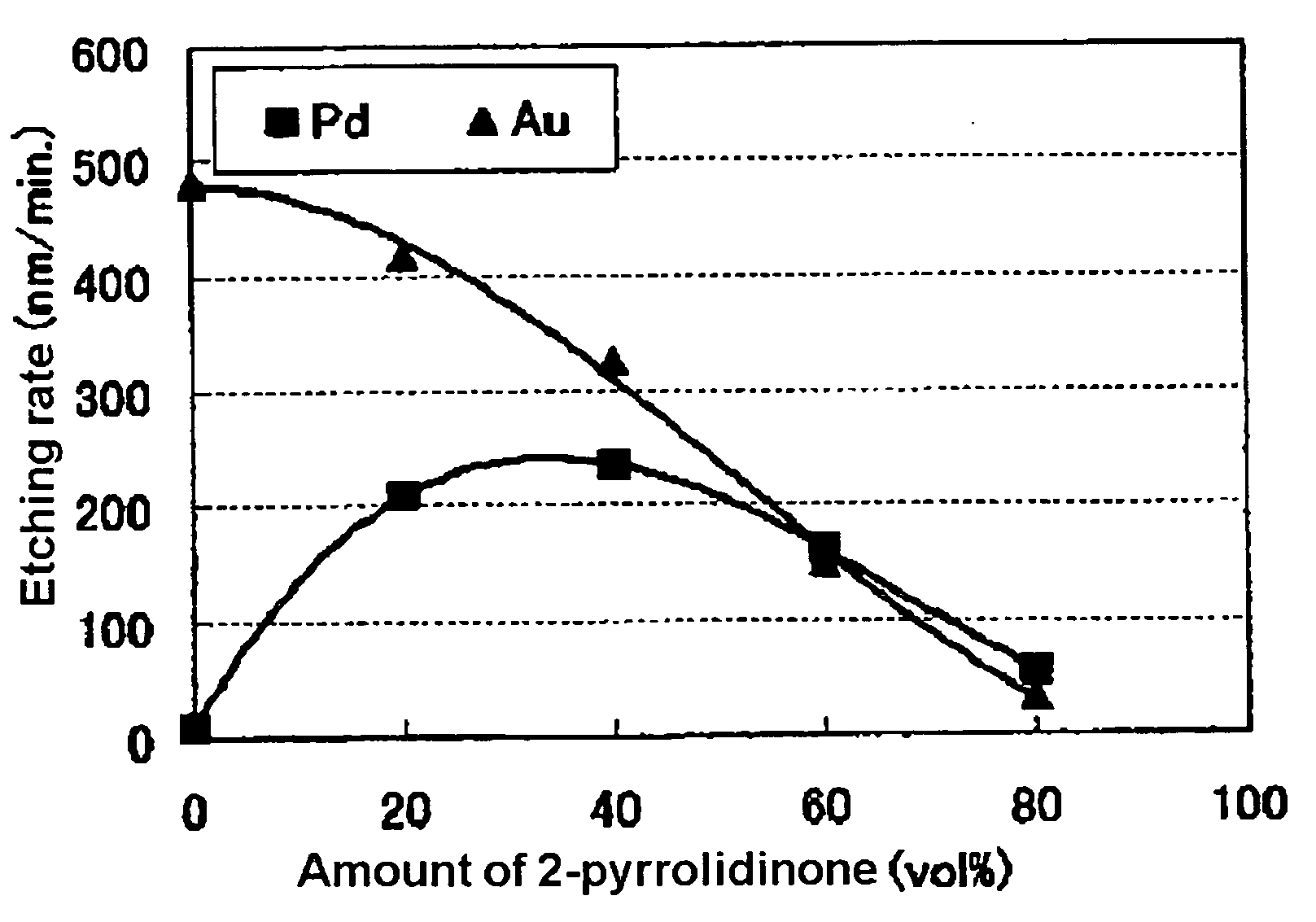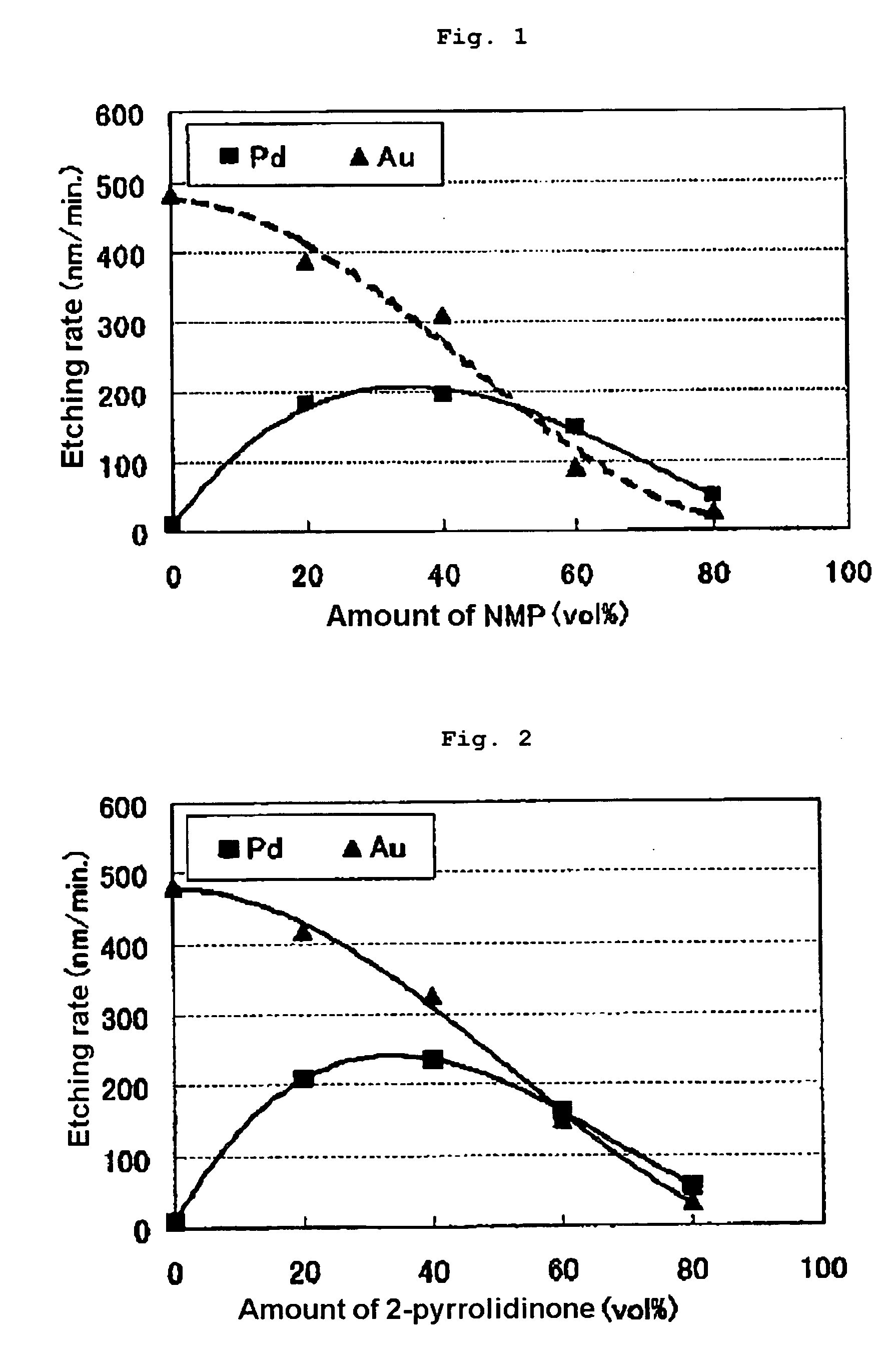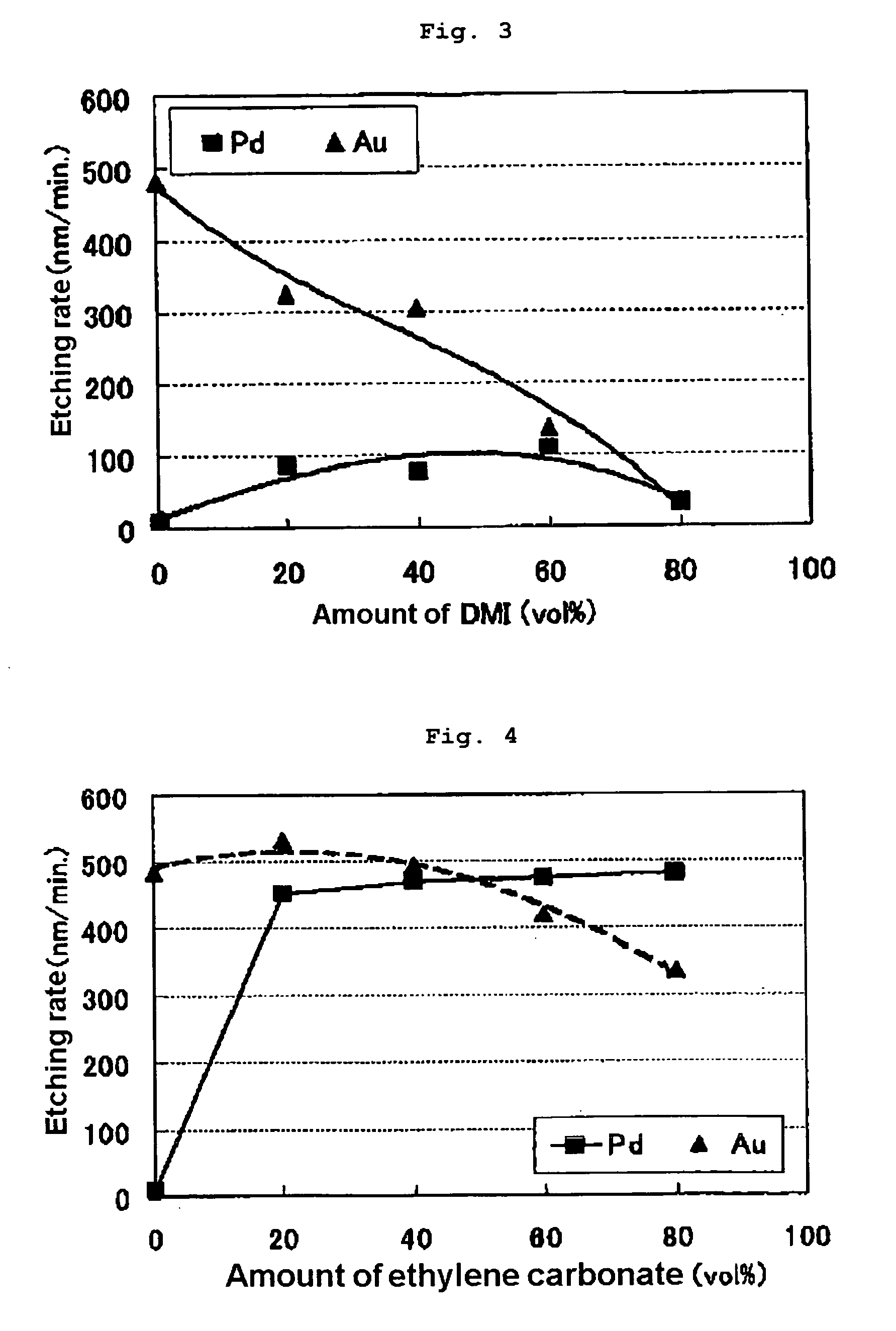Palladium-Selective Etching Solution and Method for Controlling Etching Selectivity
a selective etching and solution technology, applied in the field of etching materials, can solve the problems of not being able to inhibit the etching of gold, not being able to control the etching amount of the respective metal, etc., and achieve the effect of preventing gold damage to the utmost and changing the etching selectivity
- Summary
- Abstract
- Description
- Claims
- Application Information
AI Technical Summary
Benefits of technology
Problems solved by technology
Method used
Image
Examples
example 1
[0041]The experiment was conducted by simulating the etching of palladium on a wafer in which palladium and gold coexist. 4 etching solutions of 200 mL each were prepared by blending 20, 40, 60 and 80 vol %, respectively, of N-methyl-2-pyrrolidinone (NMP) with the etching solution of the above-mentioned Comparative Example. Next, 2×2 cm specimens respectively of palladium and gold were etched by immersion in the above-mentioned etching solution for 1 minute while being gently stirred at a temperature of 30 degrees Celsius. The palladium and gold etching rates were determined by gravimetric method and the Pd / Au ratio was calculated. The results are shown in Table 1 and FIG. 1.
[0042]It was found that, as a result of adding NMP, the palladium etching rate increased relative to the gold etching rate and that the Pd / Au ratio also increased. It was further found that the Pd / Au ratio changed according to the concentration of the additive and that it exceeds 1 when the palladium and gold et...
example 2
[0044]Etching was performed as in Example 1, except that the compounds shown in Table 2 were used instead of the NMP used in Example 1. The results are shown in Table 2. Moreover, for cases in which ethylene carbonate, ethanol, acetone and N,N-dimethylacetamide are used as additive, the relationship between the additive amount and the etching rate is shown in FIGS. 4, 5, 7 and 9, respectively. It was found that, as a result of adding an additive, the palladium etching rate increased relative to the gold etching rate and that the Pd / Au ratio also increased. It was further found that the Pd / Au ratio exceeds 1 when the palladium and gold etching rates are reversed by appropriately selecting the additive concentration.
[Table 2]
[0045]
TABLE 2PdAuEtchingAdditiveetchingetchingrateamountraterateratioCompound(vol %)(nm / min.)(nm / min.)(Pd / Au)none—84820.022-pyrrolidinone202104180.50402353260.72601621501.088057331.731,3-dimethyl-2-20853250.26imidazolidinone40753050.25601091400.788031311.00Ethylen...
example 3
[0046]Etching was performed as in Example 1, except that the compounds shown in Table 3 were used instead of the NMP used in Example 1. The results are shown in Table 3. Moreover, the relationship between the amount of thiocyanic acid ammonium and the etching rate is shown in FIG. 6. It was found that, as a result of adding an additive, the palladium etching rate increased and that the Pd / Au ratio also increased. It was further found that the Pd / Au ratio exceeds 1 when the palladium and gold etching rates are reversed by appropriately selecting the additive concentration.
[Table 3]
[0047]
TABLE 3PdAuEtchingAdditiveetchingetchingrateamountraterateratioCompound(mol / l)(nm / min.)(nm / min.)(Pd / Au)none—84820.02ammonium0.29756531.49thiocyanate0.414037071.980.615647901.980.814157281.941.013957691.81potassium0.23956230.63thiocyanate0.49796761.450.613816931.990.813867111.951.014097731.82
PUM
| Property | Measurement | Unit |
|---|---|---|
| volume % | aaaaa | aaaaa |
| carbon number | aaaaa | aaaaa |
| carbon number | aaaaa | aaaaa |
Abstract
Description
Claims
Application Information
 Login to View More
Login to View More - R&D
- Intellectual Property
- Life Sciences
- Materials
- Tech Scout
- Unparalleled Data Quality
- Higher Quality Content
- 60% Fewer Hallucinations
Browse by: Latest US Patents, China's latest patents, Technical Efficacy Thesaurus, Application Domain, Technology Topic, Popular Technical Reports.
© 2025 PatSnap. All rights reserved.Legal|Privacy policy|Modern Slavery Act Transparency Statement|Sitemap|About US| Contact US: help@patsnap.com



